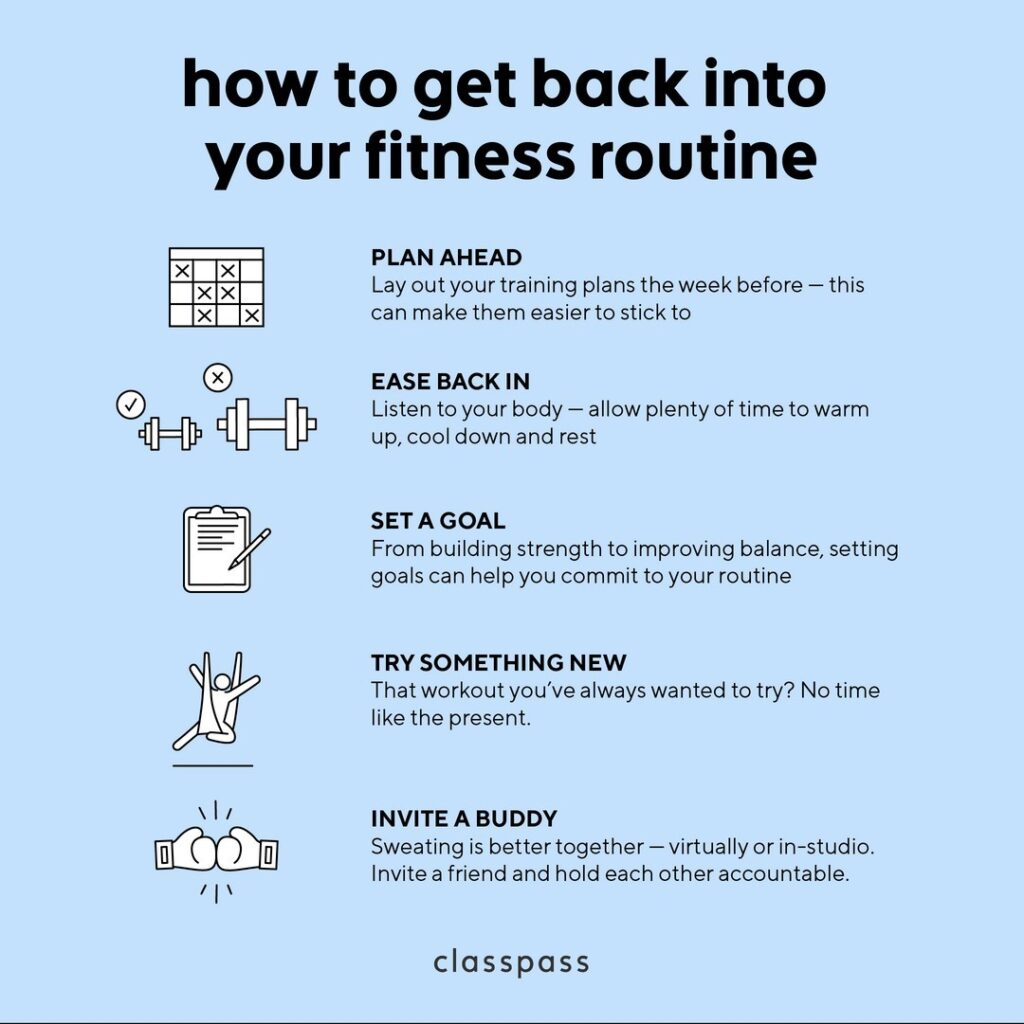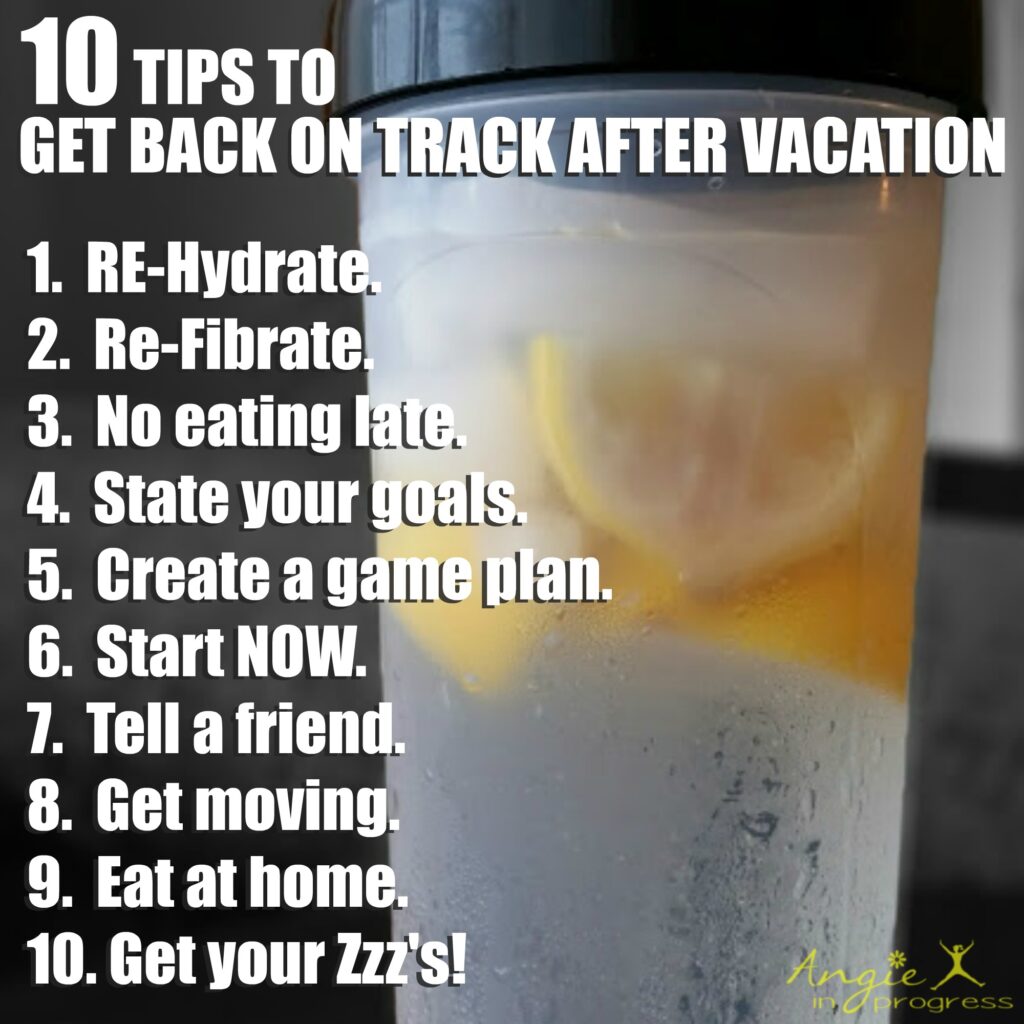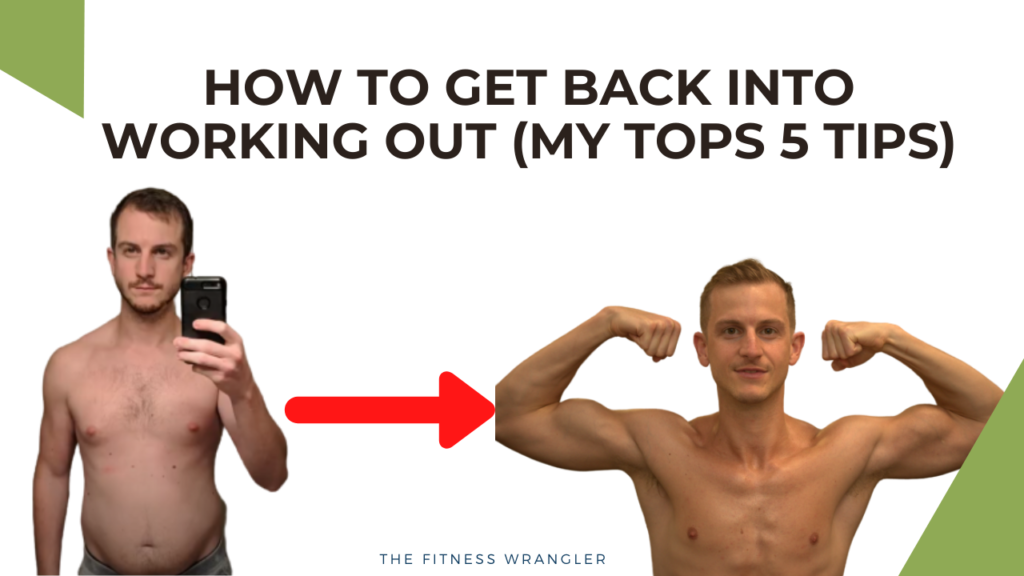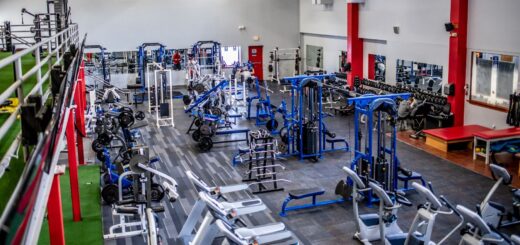10 Tips to Get Back into Working Out
Getting back into a workout routine can be a challenge, especially after a long break. Whether it’s due to a hectic schedule, lack of motivation, or other reasons, we’ve all been there. But don’t worry, because we’ve got you covered with these 10 tips that will help you kick-start your fitness journey. From setting realistic goals to finding an exercise routine you enjoy, these tips will guide you on the path to a healthier and more active lifestyle. So let’s lace up those sneakers and get ready to jump back into the world of fitness!
Setting goals
Identify your fitness goals
Before you start working out again, it’s important to identify your fitness goals. Ask yourself what you want to achieve through your workouts. Whether it’s losing weight, improving strength, building muscle, or increasing overall fitness, knowing your goals will help you stay focused and motivated throughout your fitness journey.
Create a realistic workout schedule
Once you have determined your fitness goals, it’s essential to create a realistic and achievable workout schedule. Consider your current fitness level, available time, and any other commitments you may have. Plan your workouts in a way that allows for consistency and gradual progress. Remember, small steps taken consistently will lead to significant improvements over time.
Getting organized
Find a suitable workout space
Having a suitable workout space is key to creating an enjoyable and effective exercise routine. Look for a space in your home or in a nearby gym that is well-lit, well-ventilated, and free from distractions. Make sure it is large enough to accommodate your movements comfortably and has sufficient privacy, if needed. Having a dedicated workout space can help you stay focused and motivated during your workouts.
Gather necessary equipment and attire
Depending on the type of workout you choose, you may need to gather some necessary equipment and attire. These may include workout clothes, proper footwear, yoga mats, weights, resistance bands, or exercise balls. Invest in high-quality equipment that suits your workouts and fits your budget. Having the right gear will not only enhance your performance but also increase your safety and comfort during your workout sessions.
Create a workout playlist
Music can be a great source of motivation and energy during your workouts. Create a workout playlist that includes your favorite songs with an upbeat tempo. Choose songs that make you feel positive and energized. Whether you prefer pop, rock, hip-hop, or any other genre, your workout playlist should be tailored to your personal taste. Listening to inspiring music can help you push through those challenging workouts and make exercising more enjoyable.

Starting slow
Listen to your body
When you’re getting back into working out, it’s crucial to listen to your body. Pay attention to how you feel during and after each workout. If you experience any pain or discomfort, it’s a sign that you may be pushing yourself too hard. Adjust your intensity or modify your exercises accordingly. Your body knows its limits, and respecting those limits will prevent injuries and ensure a safe and sustainable fitness journey.
Choose low-impact exercises initially
If you are just starting to work out again or have been inactive for a while, it’s a good idea to begin with low-impact exercises. These types of exercises are gentle on your joints and muscles, reducing the risk of injury. Walking, swimming, cycling, or using an elliptical machine are excellent low-impact options to consider. As you gradually build up your fitness level, you can incorporate more high-impact exercises into your routine.
Gradually increase intensity and duration
Once you have established a routine and feel comfortable with your workouts, it’s time to start increasing the intensity and duration. Gradually challenge yourself by adding more resistance to your strength training, increasing your cardio endurance, or trying more advanced yoga poses. Avoid pushing yourself too hard too soon, as this can lead to burnout or injuries. Slowly progressing will help you maintain consistency and enjoy long-term success with your fitness goals.
Finding motivation
Find an exercise buddy
Finding an exercise buddy can significantly boost your motivation and make working out more enjoyable. Look for a friend, family member, or colleague who shares similar fitness goals or interests. Exercising together not only provides accountability but also creates a supportive and fun environment. You can encourage each other, share workout ideas, and celebrate achievements together. Having a workout buddy can make those early morning or rainy day workouts much more appealing.
Join a fitness class or group
If you prefer a more social exercise setting, consider joining a fitness class or group. There are countless options available, such as group fitness classes, dance classes, boot camps, or sports leagues. Being part of a community of like-minded individuals can provide a sense of belonging and motivation. Additionally, the guidance and expertise of a qualified instructor can help you improve your technique and push you to new heights.
Reward yourself for achieving milestones
Rewarding yourself for achieving milestones is a great way to stay motivated on your fitness journey. Set small goals along the way and celebrate each accomplishment. Treat yourself to something you enjoy, whether it’s a massage, a new workout outfit, or a night out with friends. Recognizing and celebrating your progress will reinforce positive behavior and keep you motivated to continue making strides towards your ultimate fitness goals.

Creating a routine
Make exercise a regular part of your day
To ensure consistency with your workouts, make exercise a regular part of your day. Treat it as a non-negotiable appointment that you prioritize. Find a time that works best for you, whether it’s early in the morning, during your lunch break, or in the evenings. Consistency is key when it comes to making progress with your fitness goals, so make a commitment to yourself and stick to it.
Establish a consistent workout time
In addition to making exercise a regular part of your day, it’s beneficial to establish a consistent workout time. Your body will become accustomed to exercising at the same time each day, making it easier to stay motivated and focused. Choose a time when you have the most energy and can dedicate your full attention to your workouts. By establishing a routine, you’ll create a healthy habit that will become second nature.
Plan ahead for potential barriers
Life is full of unexpected challenges, but with proper planning, you can overcome potential barriers to your workout routine. Anticipate any potential obstacles that may arise, such as work commitments, family responsibilities, or travel plans. Identify backup workout options, such as online classes or workout routines that can be done at home. By having a plan in place, you can adapt to changes and ensure that exercise remains a priority in your life.
Mixing up workouts
Include cardio, strength, and flexibility exercises
To achieve a well-rounded fitness routine, it’s important to include a variety of exercises that target different aspects of your fitness. Cardiovascular exercises, such as running or cycling, improve your heart health and endurance. Strength training exercises, like weightlifting or bodyweight workouts, build muscle strength and tone. Flexibility exercises, such as yoga or stretching, improve joint mobility and prevent injuries. By incorporating all three types of exercises, you’ll be well on your way to improving your overall fitness.
Try different workout styles or classes
Keeping your workouts exciting and engaging is crucial for long-term adherence to your fitness routine. Try different workout styles or classes to challenge yourself and discover new activities you enjoy. Whether it’s HIIT (High-Intensity Interval Training), Pilates, kickboxing, or Zumba, the options are endless. Trying new workouts not only prevents boredom but also helps you work different muscle groups and avoid plateauing in your progress.
Prevent boredom by varying exercises
Even if you find a workout style or class that you love, it’s important to prevent boredom by varying your exercises. Within each type of workout, there are countless variations and progressions you can explore. For example, if you enjoy running, try incorporating sprints, hill training, or intervals to keep things interesting. If you prefer strength training, switch up your exercises, rep ranges, or equipment used. By constantly challenging yourself and exploring new exercises, you’ll stay engaged and motivated to continue working out.

Tracking progress
Use fitness apps or wearables to monitor progress
Fitness apps and wearables can be valuable tools to help you track your progress and stay motivated. Many apps allow you to log your workouts, monitor your heart rate, count your steps, or even provide personalized workout plans. Wearables, such as fitness trackers or smartwatches, can provide real-time data and insights into your performance. Seeing your progress visually and receiving reminders can keep you accountable and motivated throughout your fitness journey.
Keep a workout journal
Keeping a workout journal is another effective way to track your progress and reflect on your fitness journey. Write down the details of each workout, including the exercises, sets, reps, and weights used. You can also record how you felt during the workout, any modifications or progressions made, and any other notes you find valuable. Over time, you’ll be able to look back and see how far you’ve come, which can be incredibly motivating and inspiring.
Celebrate achievements and milestones
Don’t forget to celebrate your achievements and milestones along the way. Whether it’s completing your first 5K, lifting a heavier weight, or reaching a certain number of workouts, celebrate these victories as they represent your progress and dedication. Treat yourself to something special, share your accomplishments with friends and family, or simply take a moment to reflect on how far you’ve come. Celebrating achievements not only boosts your motivation but also reinforces the positive habits you’ve developed.
Staying hydrated and nourished
Drink plenty of water before, during, and after workouts
Staying hydrated is essential for optimal performance and overall health. Make sure to drink plenty of water before, during, and after your workouts. Dehydration can lead to fatigue, dizziness, and decreased exercise performance. Keep a water bottle handy and take regular sips throughout your workout. If you’re engaging in intense or prolonged exercise, consider sports drinks that can replenish electrolytes lost through sweat.
Consume balanced meals with protein and carbohydrates
Fueling your body with proper nutrition is crucial for supporting your workouts and aiding in recovery. Consume balanced meals that include a combination of lean proteins, complex carbohydrates, and healthy fats. Protein is essential for repairing and building muscles, while carbohydrates provide energy for your workouts. Incorporate foods such as lean meats, fish, whole grains, fruits, vegetables, and nuts into your diet. Prioritize real, whole foods for optimal nourishment.
Consider pre and post-workout snacks
If your workouts are particularly intense or long, consider incorporating pre and post-workout snacks into your routine. Consuming a light snack before exercise can provide a source of energy and prevent feelings of lightheadedness. Opt for easily digestible foods that are rich in carbohydrates, such as a banana, a piece of toast with nut butter, or a yogurt. After your workout, replenish your body with a snack that combines protein and carbohydrates to aid in muscle recovery and glycogen replenishment.

Rest and recovery
Include rest days in your workout schedule
Rest and recovery are vital components of any fitness routine. Include regular rest days in your workout schedule to allow your body to repair and rebuild. Overtraining can lead to injuries, decreased performance, and burnout. Use rest days as an opportunity to engage in lighter physical activities such as walking or stretching, allowing your muscles and joints to recover. Trust that rest is just as crucial to your progress as the actual workouts.
Get adequate sleep for muscle recovery
Sleep is a critical factor in muscle recovery and overall well-being. Aim for seven to nine hours of quality sleep each night. During sleep, your body releases growth hormone, repairs damaged tissues, and consolidates memories. Lack of sleep can impair muscle recovery, increase the risk of injuries, and negatively impact your mood and cognitive function. Prioritize a consistent sleep schedule and create a sleep-friendly environment to maximize your recovery and optimize your workouts.
Try stretching or foam rolling for relaxation
Incorporate stretching or foam rolling into your post-workout routine for relaxation and muscle recovery. Stretching helps to improve flexibility, increase blood flow, and reduce muscle soreness. It also promotes proper posture and reduces the risk of injuries. Foam rolling, on the other hand, provides a self-massage and helps release tension and adhesions in your muscles. By incorporating these recovery techniques, you’ll feel more relaxed, mobile, and ready for your next workout.
Seeking professional guidance
Consult with a fitness instructor or personal trainer
If you’re uncertain about how to start working out again or want expert guidance, consider consulting with a fitness instructor or personal trainer. They can assess your current fitness level, understand your goals, and create a customized workout plan that suits your needs. Their knowledge and expertise will ensure that your workouts are safe, effective, and enjoyable. They can also provide valuable instruction on proper form, breathing techniques, and progression.
Take advantage of fitness assessments
Fitness assessments are a great way to measure your current fitness level and track your progress over time. Many fitness facilities offer assessments that include measurements such as body composition, cardiovascular endurance, strength, and flexibility. These assessments can provide valuable data that guides your workout programming and helps you set realistic goals. Utilize these assessments periodically to gauge your progress and make necessary adjustments to your fitness routine.
Get advice on proper form and technique
Proper form and technique are essential for maximizing the benefits of your workouts and minimizing the risk of injuries. Seek advice from a fitness professional on proper form for specific exercises or movements. They can guide you on the correct alignment, positioning, and execution of exercises. Understanding the correct form not only ensures that you’re targeting the intended muscle groups but also helps prevent strain or injury. Don’t hesitate to ask for guidance to get the most out of your workouts.
By following these tips, you can confidently get back into working out and embark on a successful fitness journey. Remember to set realistic goals, create a routine that suits your lifestyle, find motivation, mix up your workouts, track your progress, prioritize rest and recovery, and seek professional guidance when needed. Stay consistent, trust the process, and enjoy the physical, mental, and emotional benefits that come with leading an active and healthy lifestyle.

















It's great that you talked about how business insurance can provide financial protection against unexpected events and help ensure the…
I like that you mentioned how business insurance is essential for protecting your bottom line and the long-term viability of…